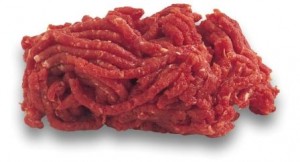 It’s business as usual for New Zealand meat exporters following the re-election of United States President Obama for another four year term, but it’s not time to relax.
It’s business as usual for New Zealand meat exporters following the re-election of United States President Obama for another four year term, but it’s not time to relax.
Prime Minister John Key has already congratulated the President on his “hard fought victory” and re-election, tweeting last night that he looks forward to further developing the close and enduring relationship between the two countries.
“There will be many opportunities to enhance the relationship, which is built on shared values and a commitment to improve the prosperity and well-being of our people through initiatives such as the Trans-Pacific Partnership (TPP).”
Two-way trade with the US is valued at over $8 billion and the US is a leading source of investment, innovation and business ideas, says the NZ US Council. It is actively engaged in co-ordinating business and government efforts towards concluding a comprehensive, high quality result to the TPP negotiations.
NZUS Council executive director Stephen Jacobi comments that now the election has been decided, it’s positive news for exporters that there will be some certainty over the next four years.
“It’s business as usual for the relationship.”
President Obama will be very energised over his second term he notes. However, that the President will have to work hard on bringing the Republicans with him.
“The TPP initiative is good, in that it is something that can unite both sides, which will have a positive impact on the negotiations.”
The President’s biggest challenge is the state of the US economy, currently facing a ‘fiscal cliff’, and his ability to avoid a complete gridlock between Senate with its Democrat majority and the primarily Republican House of Representatives.
“How he deals with that has implications for New Zealand meat exporters as it will impact on the exchange rate,” says Jacobi, adding that one of the current US solutions – printing money – is bringing the value of their dollar down but is forcing the Kiwi dollar up, making it difficult for New Zealand exporters to operate.
With the Republicans advocating for more farm subsidies, keeping an eye on progress in the US Farm Bill will be important for New Zealand meat exporters too.
The focus now is the next TPP round of talks which take place in Auckland 3-12 December with New Zealand in the chair and hundreds of negotiators from around the Asia-Pacific attending the meeting. It is fortunate that the chief US negotiator remains unchanged, with Barbara Weisel remaining in her position. However, it’s important to note everything won’t be finalised at that meeting. “It’s a continuing process but Auckland will set out how negotiations will roll out in 2013,” says Jacobi, adding that 2013 is expected to see finalisation of the agreement.
Beef will be on the agenda as Canada and Mexico join the table as full members for the first time. Jacobi says he will also be interested to see how other economies, such as Japan, react to the election news as it may speed up their entry to the trade agreement.
The concern for Jacobi is the anti-globalisation movement, which is expected to be active around the time of the talks. He calls for industry, companies and farmers to stand together to explain why it’s important for New Zealand to be in the trade negotiations.
“We need to add our voice to the multitude in support of the negotiations,” he says.
+++
The US election may bring little change to the Senate agriculture committee with the Democrats retaining control according to Food Business News, while retirements factor into the House of Representatives’ agriculture committee with the Republicans maintaining control there. The finance committees face a similar scenario, says Jacobi. It is likely, however, that there will be a new US trade adviser. Mike Froman, currently assistant to the President and deputy national security adviser for international economic affairs – and a former Harvard classmate of Obama’s – is hotly tipped for the job.





